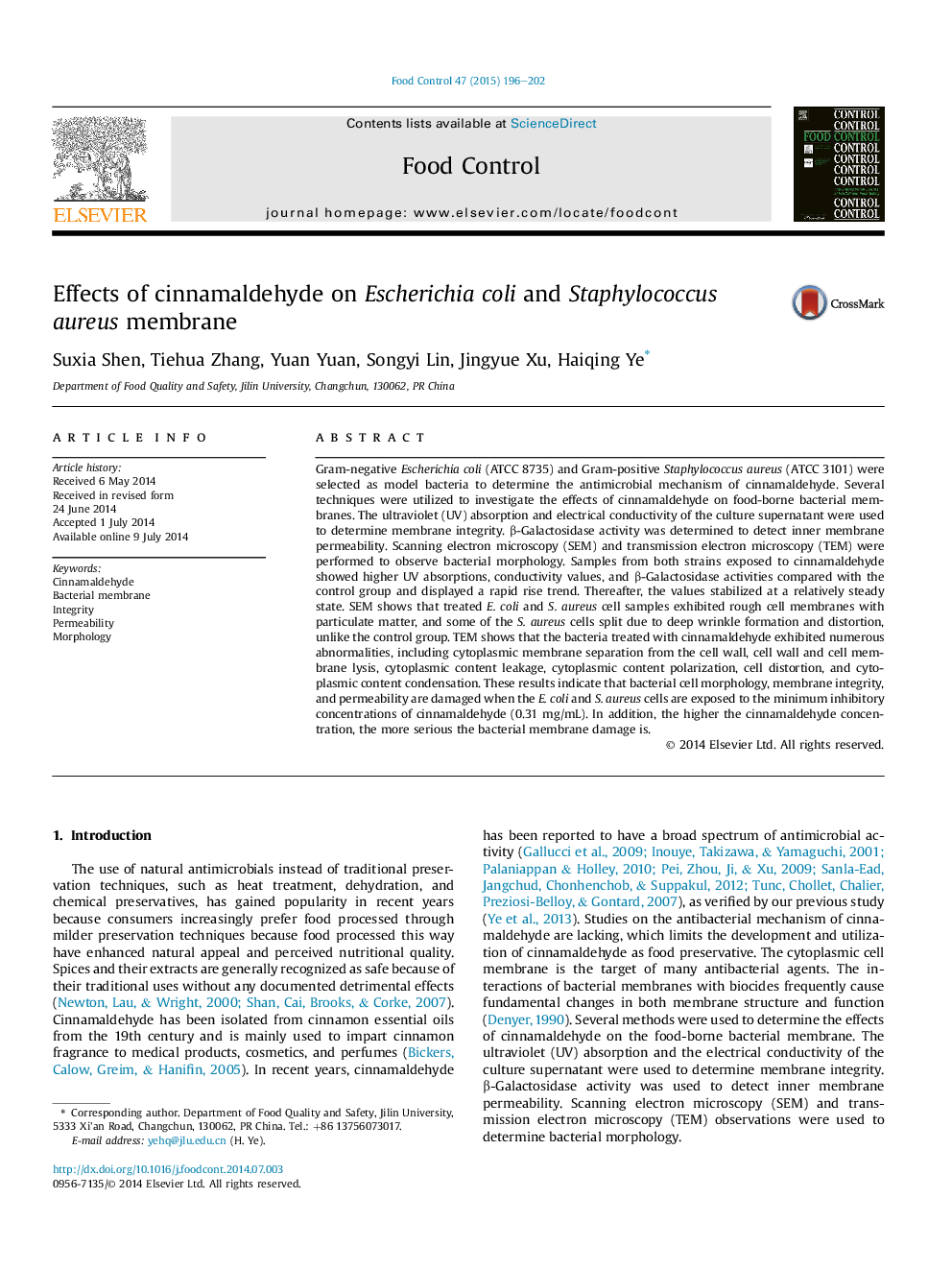| کد مقاله | کد نشریه | سال انتشار | مقاله انگلیسی | نسخه تمام متن |
|---|---|---|---|---|
| 6391369 | 1628415 | 2015 | 7 صفحه PDF | دانلود رایگان |
عنوان انگلیسی مقاله ISI
Effects of cinnamaldehyde on Escherichia coli and Staphylococcus aureus membrane
ترجمه فارسی عنوان
اثرات سینامالدئید بر روی اشرشیاکلی و غشای استافیلوکوک اورئوس
دانلود مقاله + سفارش ترجمه
دانلود مقاله ISI انگلیسی
رایگان برای ایرانیان
کلمات کلیدی
سینامالدئید، غشای باکتریایی، تمامیت، نفوذپذیری، مرفولوژی،
موضوعات مرتبط
علوم زیستی و بیوفناوری
علوم کشاورزی و بیولوژیک
دانش تغذیه
چکیده انگلیسی
Gram-negative Escherichia coli (ATCC 8735) and Gram-positive Staphylococcus aureus (ATCC 3101) were selected as model bacteria to determine the antimicrobial mechanism of cinnamaldehyde. Several techniques were utilized to investigate the effects of cinnamaldehyde on food-borne bacterial membranes. The ultraviolet (UV) absorption and electrical conductivity of the culture supernatant were used to determine membrane integrity. β-Galactosidase activity was determined to detect inner membrane permeability. Scanning electron microscopy (SEM) and transmission electron microscopy (TEM) were performed to observe bacterial morphology. Samples from both strains exposed to cinnamaldehyde showed higher UV absorptions, conductivity values, and β-Galactosidase activities compared with the control group and displayed a rapid rise trend. Thereafter, the values stabilized at a relatively steady state. SEM shows that treated E. coli and S. aureus cell samples exhibited rough cell membranes with particulate matter, and some of the S. aureus cells split due to deep wrinkle formation and distortion, unlike the control group. TEM shows that the bacteria treated with cinnamaldehyde exhibited numerous abnormalities, including cytoplasmic membrane separation from the cell wall, cell wall and cell membrane lysis, cytoplasmic content leakage, cytoplasmic content polarization, cell distortion, and cytoplasmic content condensation. These results indicate that bacterial cell morphology, membrane integrity, and permeability are damaged when the E. coli and S. aureus cells are exposed to the minimum inhibitory concentrations of cinnamaldehyde (0.31 mg/mL). In addition, the higher the cinnamaldehyde concentration, the more serious the bacterial membrane damage is.
ناشر
Database: Elsevier - ScienceDirect (ساینس دایرکت)
Journal: Food Control - Volume 47, January 2015, Pages 196-202
Journal: Food Control - Volume 47, January 2015, Pages 196-202
نویسندگان
Suxia Shen, Tiehua Zhang, Yuan Yuan, Songyi Lin, Jingyue Xu, Haiqing Ye,
